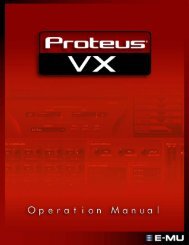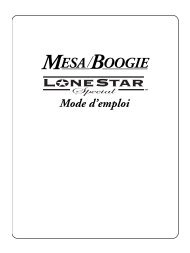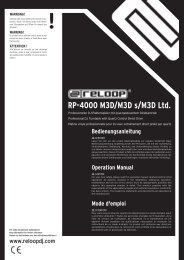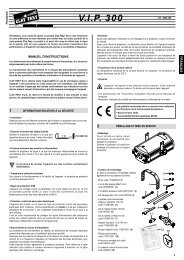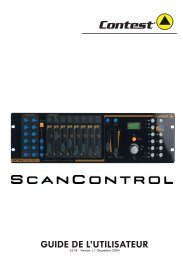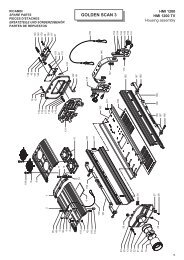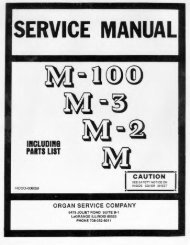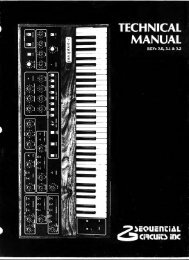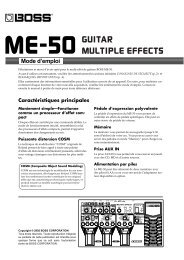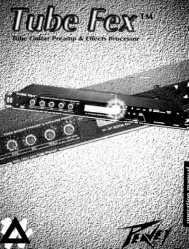You also want an ePaper? Increase the reach of your titles
YUMPU automatically turns print PDFs into web optimized ePapers that Google loves.
The Algorithms and their Parametersand both channels appear to retain equal loudness.If stereo material is recorded with a coincident pair of figure-of-eight microphones,moving the ROT slider is exactly equivalent to rotating the microphonepair. Other microphone arrays and multimicrophone setups do not rotateperfectly, but using this control is frequently preferable to simply adjustingbalance. The display shows the actual channel gains for a continually pannedsource.RFnS is used for digitally correcting probelms you used to be able to fix (orcreate) by switching analog cables around. The normal setting is +L to the leftoutput and +R to the right output. Other settings should only be used whencorrecting some problem created previously in the recording process.+L+R = Normal Routing+L-R = Right Channel polarity inverted (flipped)+R+L = Left and Right Channels swapped-R+L = Right flipped and swapped with LeftRFnS (Right ChannelFlip 'n' Swap)Equalization PageBASL and BASR are 6dB/octave shelving EQ controls with a range of +6 dBboost and -18dB cut. They move in .50 dB steps from +6 to -6 dB. The crossoverpoint is adjusted with BXOV.These controls allow independent adjustment of left and right treble. They maybe used together with the stereo adjustments to create a 12 dB/octave cut orboost. Note that the 3 dB frequencies can be different from the stereo set.BXOV sets the crossover point for BASL and BASR. When BASL and BASR areset to full cut, the level is -3 dB at the frequency set with BXOV.TXLR sets the crossover point for LTRB and RTRB. When either is set to fullcut, the level is -3 dB at the frequency set with TXLR.BASL and BASRLTRB and RTRBBXOV (Bass Crossover)TXLR (IndependentTreble Crossover)SPEQ (Spatial EQ)SPEQ sets the amount of a crossfeed between channels. The signal first goesthrough a 6 dB/octave low-pass filter whose frequency is set with BXOV. WhenSPEQ is set positive (above 0) the crossfeed has a negative sign. When SPEQis set negative (below 0), the crossfeed has a positive sign. When the control isset to either maximum or minimum, the gain in the crossfeed circuit is unity.The result of this control is to change the separation of low frequency stereosignals. When the control is raised, low frequencies in the sum (mono) channelare reduced, and low frequencies in the difference (stereo) channel are raised.With the control at maximum, low frequency mono signals are completelyremoved. This represents an extreme setting which should seldom be needed4-35


